Time, Targeting, Trackability: A Short Guide For Picking Channels

From around 2008 to about 2016, marketers were obsessed with content marketing.
With good reason. Content marketing built major companies across industries, from B2B companies like HubSpot and Marketo to mass consumer brands like Barkbox and Grammarly.
As a result, we have a whole generation of marketers and founders who are convinced that content marketing is a superior marketing activity that cannot fail.
I used to be in this camp. When faced with a marketing problem, I tried to solve it with Content! Sometimes I was right. But I'd also be plenty wrong. When all you have is a hammer, everything looks like a nail.
I eventually learned the hard way that Content was not a silver bullet.
For instance: it is terrible at generating results at scale immediately.
Contrast this with Performance marketing (aka direct response online ads) which, with enough budget, can generate value within hours of campaign launch:
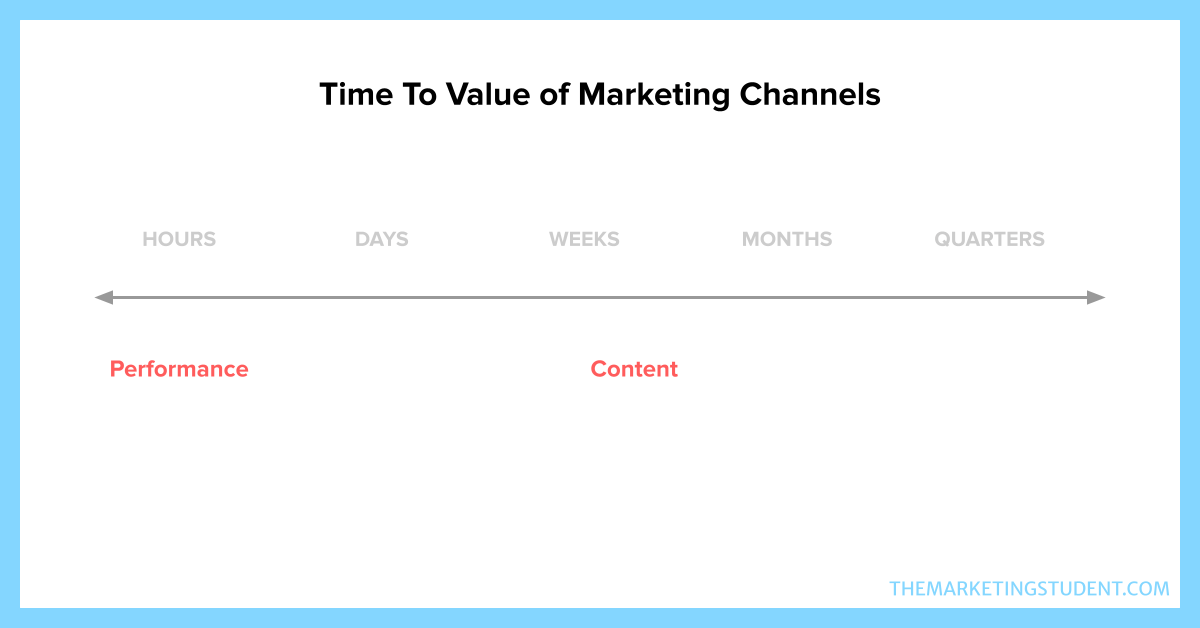
Content is also not ideal for situations where you need to reach large audiences far outside of your typical reach. Recall when Zuckerberg needed to make a big splash about changing the company name to Meta, he primarily did so with press interviews and brand campaigns; not by releasing really great-looking PDFs, blog posts or company announcement videos.
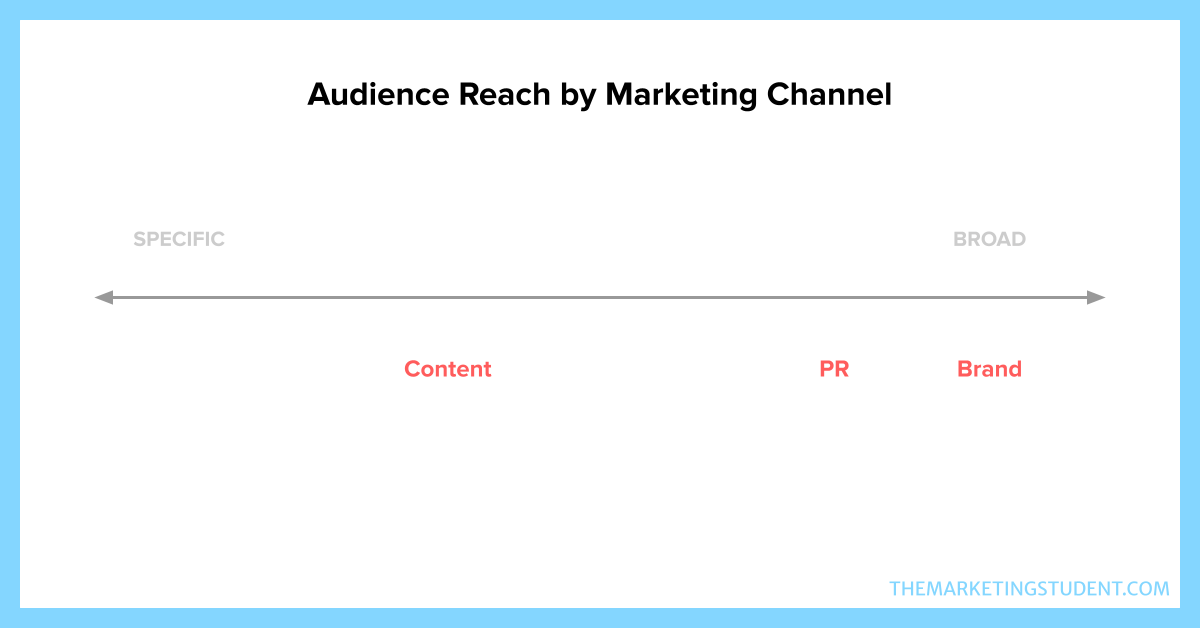
Why am I telling you this? Because you might not realize it, but you're biased like I was. Biased on whatever marketing tactics you saw the most during your "formative years."
Once I started getting put in charge of budgets and resources, I had to un-learn my bias for Content and start understanding what channels and activities to deploy and when.
Thankfully, there's a handy framework you can use.
Time, Targeting, Trackability
When you're choosing your marketing investments, you first have to think of these constraints. Going through them often reveals the answer.
A caveat: there are a lot of "it depends" nuances when thinking about this for different industries. Treat this like a quick framework, not as a definitive guide.
Time
If you need to get value ASAP – you're going to miss the quarter, you need to compensate for some other part of the business, etc – then you should look at channels like this, choosing the ones that align with your time horizon.
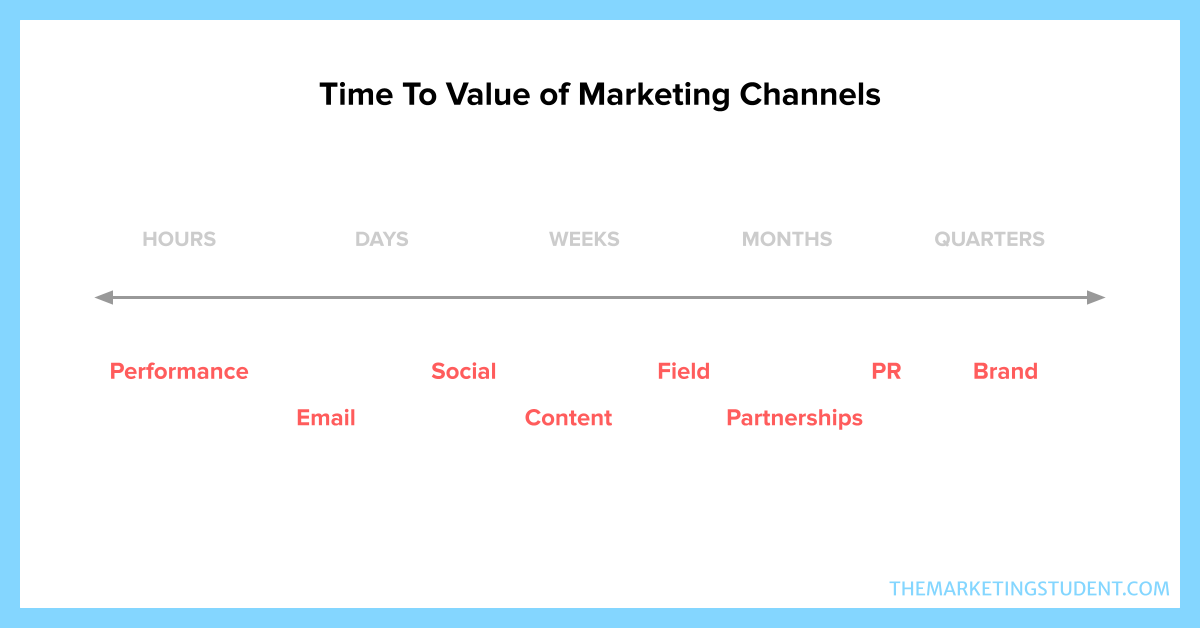
Targeting
If you need to reach specific audiences – you are an ecommerce product for a niche audience – or if you need to reach broad audiences, you are Zuck and you need to sell investors, employees and your ecosystem on your company pivot, you would think about channels this way:
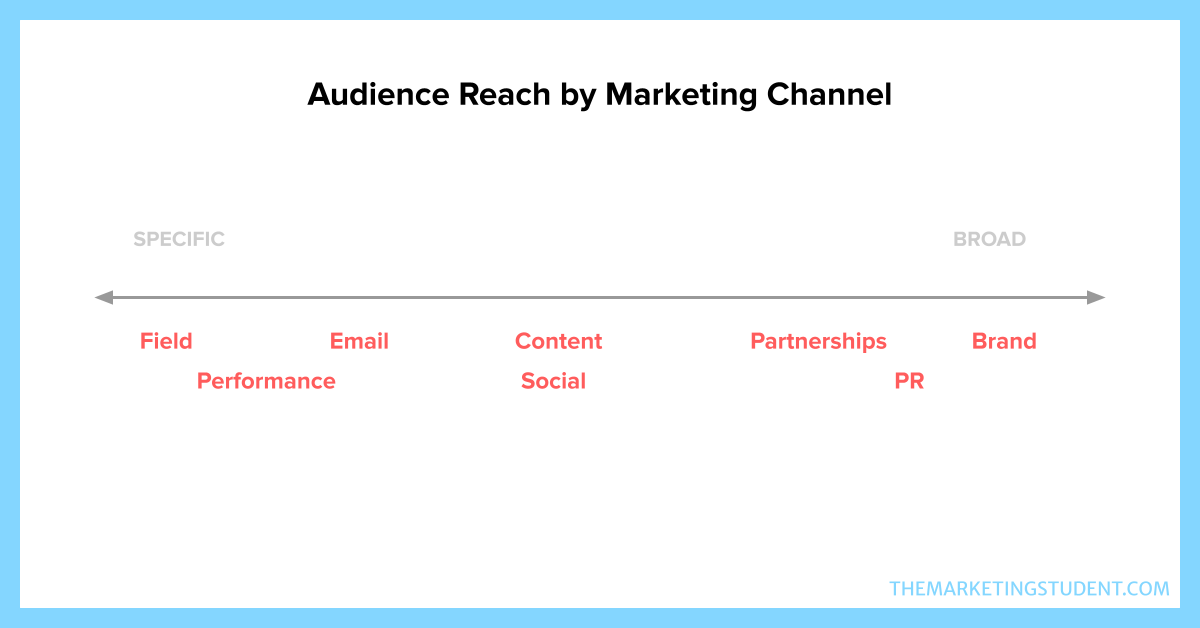
You'll notice that the order of the channels broadly match that in the Time To Value graphic, but not exactly. Understanding these variables is one of the fun/annoying parts of marketing.
Trackability
If your team has a low tolerance for uncertainty – you have a small budget, you are short on runway, or marketing doesn't yet have credibility with management – then you'll need to have an idea of which activities would be appropriate for your situation.
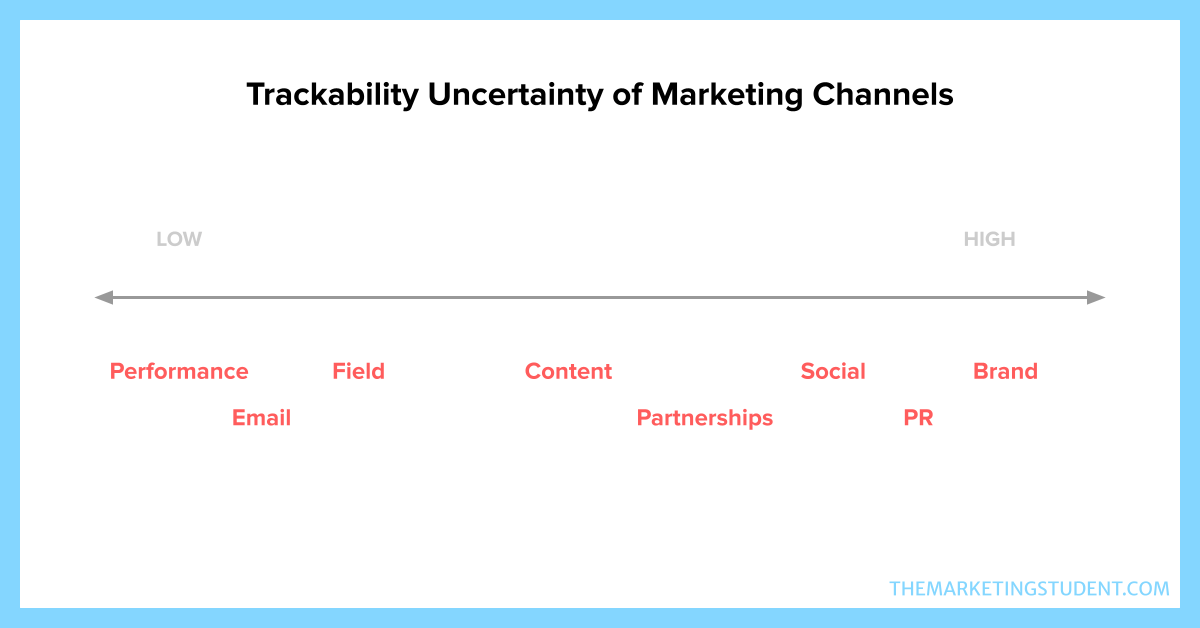
As organizations mature, they inevitably execute many if not most of these in various forms. The challenge in those cases is ensuring that the investments are appropriately balanced based on the strategy and the competitive landscape.
For example, certain industries are biased towards certain channels, creating opportunities for new entrants.
When HubSpot, Marketo et al were coming onto the scene in the 2010s, their B2B competitors were often heavily invested in field marketing and brand campaigns. It was "unheard of" for HubSpot and Marketo to invest in things like blogs, social media and even advertising on Facebook.
There is never a "best" marketing channel, only the one appropriate to your situation. Your job as a marketer is to identify what the situation demands, then pick the channel that gives you the best shot at succeeding.